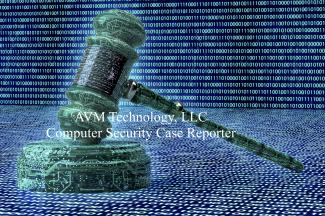People v. Lett
The PEOPLE, etc., Respondent,
v.
Gladys LETT, Appellant.
Supreme Court, Appellate Division,
Second Department.
Nov. 2, 1992.
MEMORANDUM BY THE COURT.
Appeal by the defendant from a judgment of the Supreme Court, Queens County (Pitaro, J.), rendered August 22, 1989, convicting her of grand larceny in the third degree, computer trespass, and offering a false instrument for filing in the first degree, upon a jury verdict, and imposing sentence.
ORDERED that the judgment is affirmed.
The People's evidence at trial established that between April 1984 and June 1988 the defendant, an employee at the Creedmoor Psychiatric Center (hereinafter Creedmoor), received some $52,717.30 in overtime pay. However, the People established that there was no supporting documentation for $35,009.96 of this sum. The People proved at trial the existence of an arrangement whereby the codefendant Paul Pettis entered the defendant's undocumented overtime into Creedmoor's computer system.
On appeal, the defendant contends that her guilt was not proven beyond a reasonable doubt, and that certain remarks made by the prosecutor during his summation constituted reversible error. The defendant's contentions are without merit.
When the circumstantial evidence in this case is viewed in the light most favorable to the prosecution (see, People v. Kennedy, 47 N.Y.2d 196, 417 N.Y.S.2d 452, 391 N.E.2d 288; People v. Benzinger, 36 N.Y.2d 29, 32, 364 N.Y.S.2d 855, 324 N.E.2d 334), and when the prosecution is given the benefit of every reasonable inference which could be drawn therefrom (People v. [187 A.D.2d 457] Lewis, 64 N.Y.2d 1111, 1112, 490 N.Y.S.2d 166, 479 N.E.2d 802; People v. Way, 59 N.Y.2d 361, 365, 465 N.Y.S.2d 853, 452 N.E.2d 1181; People v. Montanez, 41 N.Y.2d 53, 57, 390 N.Y.S.2d 861, 359 N.E.2d 371), it is apparent that the defendant did not earn all of the overtime pay that she knowingly received. The defendant's accomplice was observed entering overtime for the defendant into a computer terminal on three separate occasions: March 7, 1988, April 4, 1988, and April 21, 1988. These entries, which were verified by certain computer records but unsupported by sign-in sheets or other authenticating documentation, are consistent with a conclusion of guilt, while the proven facts as a whole exclude to a moral certainty every inference other than guilt (see, People v. Morgan, 66 N.Y.2d 255, 256, 496 N.Y.S.2d 401, 487 N.E.2d 258 cert. denied Morgan v. New York, 476 U.S. 1120, 106 S.Ct. 1984, 90 L.Ed.2d 666; People v. Kennedy, supra, 47 N.Y.2d at 202, 417 N.Y.S.2d 452, 391 N.E.2d 288; People v. Benzinger, supra, 36 N.Y.2d at 32, 364 N.Y.S.2d 855, 324 N.E.2d 334.) Moreover, upon the exercise of our factual review power, we are satisfied that the verdict was not against the weight of the evidence (CPL 470.15[5]; cf., People v. Robinson, 139 A.D.2d 677, 527 N.Y.S.2d 307).
We also disagree with the defendant's contention that alleged improper and prejudicial comments made by the prosecutor during summation constituted reversible error. Contentions as to most of the remarks are unpreserved for appellate review, and, in any event, those remarks constituted permissible responses to the codefendant's summation, in which he repeatedly attacked the credibility and veracity of the People's witnesses (see, People v. Boyajian, 148 A.D.2d 740, 741, 539 N.Y.S.2d 683; People v. Rawlings, 144 A.D.2d 500, 533 N.Y.S.2d 1001; People v. Morgan, 136 A.D.2d 749, 524 N.Y.S.2d 85). In the one instance where the prosecutor referred to a fact outside the evidence and an objection was interposed, the court's prompt curative instructions dispelled any prejudice that might otherwise have affected the verdict (see, People v. Ellis, 157 A.D.2d 797, 550 N.Y.S.2d 398). Furthermore, given the overwhelming evidence of guilt, any error in this regard was harmless (see, People v. Crimmins, 36 N.Y.2d 230, 241-242, 367 N.Y.S.2d 213, 326 N.E.2d 787; People v. Ellis, supra; People v. Clink, 143 A.D.2d 838, 533 N.Y.S.2d 136).

